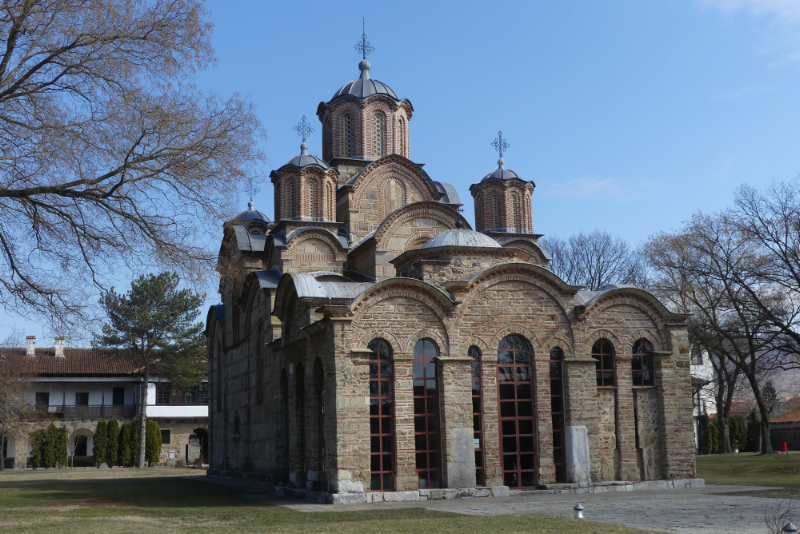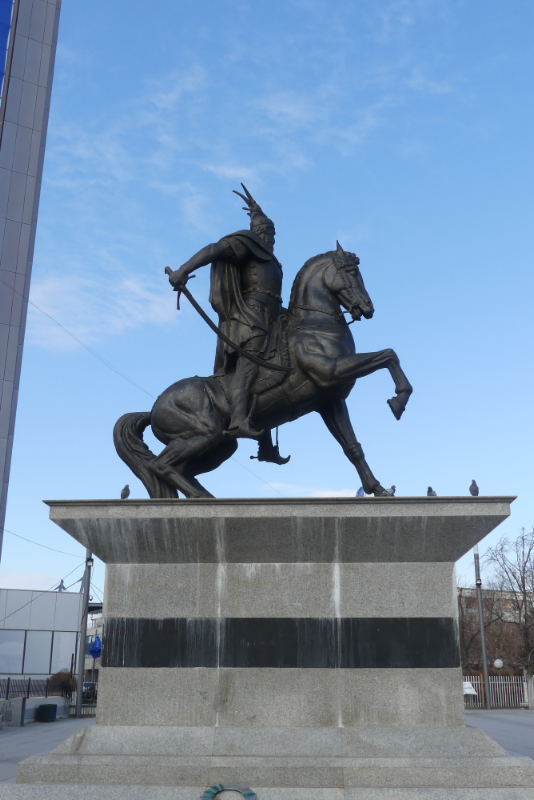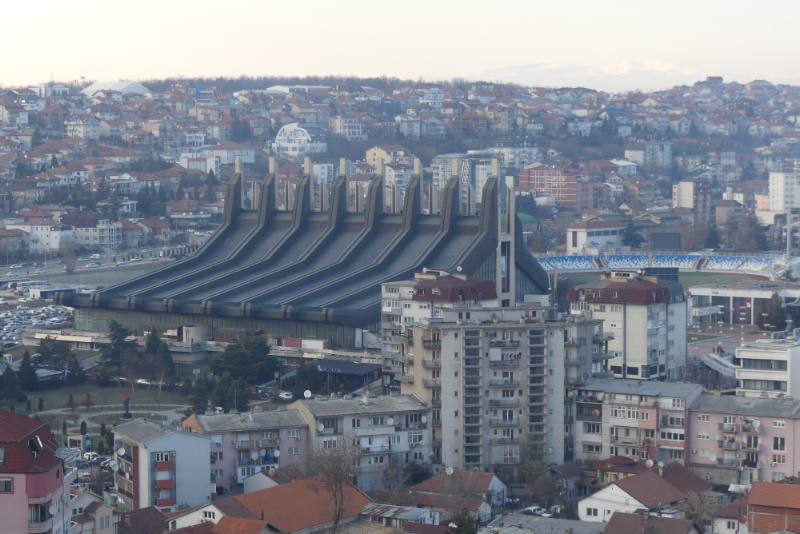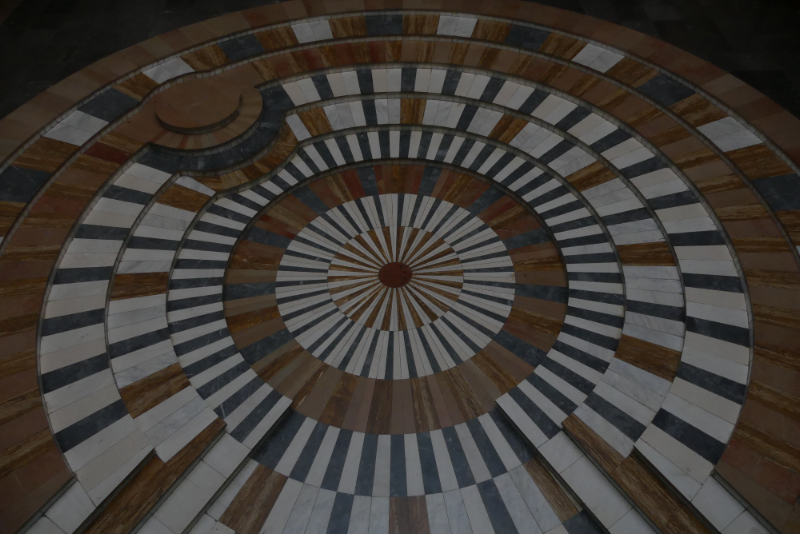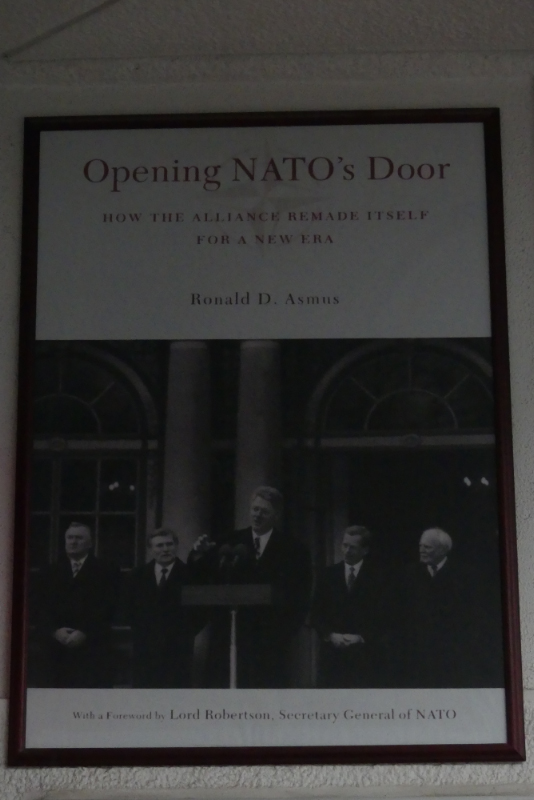Sunday 24 to Tuesday 26 February
We found our hotel in Pristina in Skopje and got settled in. Representatives from the tour company, Evasian Albanie handed over our hire car, a little white Ford Festiva.
It was cold. Pristina is set on the Kosovo Plain at about 650m above sea level. The air was still and cold – seriously cold.
We walked down the promenade called Mother Teresa Walk to get an understanding of city, but didn’t stay out too long as the day closed in.
We were directed to a restaurant around the corner for dinner. It was a rambling building full of curious artefacts and very cosy. Dinner was interesting, we started with aubergine in a cheese sauce baked in the oven. We both had paprika sauce. Thea with chicken and Bruce with meat balls. We were kept company and highly entertained by a singing canary.
Anxious to get to know our car and the roads, we went exploring the next day to the Gračanica Monastery. It was built by the Serbian King Stefan Milutin in 1321 on the ruins of a 6th-century basilica. The monastery is on UNESCO’s World Heritage. It was set in a large garden area and we were free to explore the gardens and the church, but photos were not allowed in the church. Oops, I did sneak a couple of pics.
There is a bear sanctuary nearby but as it was winter and cold we had heard the bears were still hibernating.
We drove to the Badovc or Gračanica Lake, which turned out to be uninteresting, and then a drive through the countryside, which we enjoyed. Country roads and local farm houses showed us the simplicity of life here.
Kosovo declared its independence from Serbia on 17 February 2008 and as a country is recognised by 113 UN member states, which includes much of Europe. Serbia does not recognise Kosovo as a separate state but does accept their administration by Kosovo’s elected government.
We returned to Pristina, happy with our first venture in the car and found coffee and cake on the Mother Teresa Walk. A massive statue of Gjergj Kastrioti Skenderbeu took our interest. We were to learn more about him in Albania, suffice to say he had the look of a warrior hero.
We walked to the Mother Teresa church and climbed the tower to see the city sights. It isn’t an overwhelmingly beautiful city, but we did notice a lot of minarets, particularly in the northern part of the city where we were staying.
I was taken by the unusual architecture of the National Library of Kosovo, so we wandered over to explore it more closely. The roof consists of a series of bubbles, which are in fact light wells into various rooms and foyers within the building. We saw little evidence of a library of books, however there was an extensive collection of archived newspapers. It states its mission as to collect, preserve, promote and make accessible the documentary and intellectual heritage of Kosovo. Designed by Croatin architect Andrija Mutnjaković and built in 1944, the building represents a blend of Byzantine and Islamic styles. It rates 18 out of the 41 world’s ugliest buildings by The Telegraph travel blog.
Bill Clinton is a hero of Kosovo. He is credited for the Nato bombing campaign which brought an end to the Kosovo conflict in 1999. There is a massive statue of him in the city and all things Clinton are well regarded.
Kosovo is at the crossroads of Albanian, Romance, Ottoman and Slavic cultures, and they enjoy all sorts of feasts including Christmas, Orthodox Easter and Ramadan. The country boasts a wide range of flora, 25% of Balkan flora and 18% of European flora can be found in the country. Unfortunately very little was obvious to us in winter.
We left Pristina with our first visit to the Marble Caves in Gadime, south of the capital. They were discovered in 1966 when a farmer dug a hole beside his house. They are 80 million years and and 250 metres below the mountain. Five kilometres of tunnels have been excavated, and smooth concrete paths have been constructed through them to make exploration easy. It is believed that there is still much to discover.
The caves themselves were nothing special, with a lot of broken stalagmites and stalactites, however walking through marble caverns was a great experience. It is amazing the Romans and Greeks didn’t find the marble and obliterate the mountain. Our guide spoke a little English and he spoke as if he had discovered the caves. We think it is likely he got the conjugation mixed up, replacing ‘he’ the farmer with ‘I’.
Kosovo has two languages, Serbian and Albanian and all road signs are in both languages, which can be confusing if you are focussed on one destination. There was still rubbish on the road but not as bad as Macedonia. Plastic bags are a blight.
As we drove west towards our next destination of Peć we noticed the blue Kosovo flag was replaced by the red Albanian flag. In fact we learnt that 95% of Kosovo’s population is Albanian. Kosovo has the youngest population in Europe, with an estimated 70% of its citizens under 35.
e_header.jpg)


